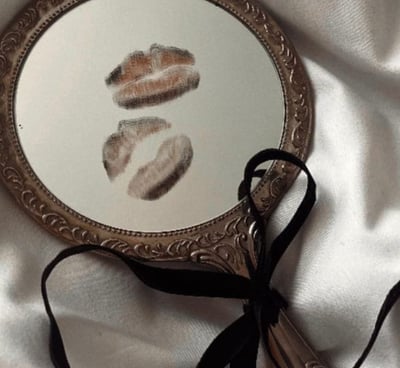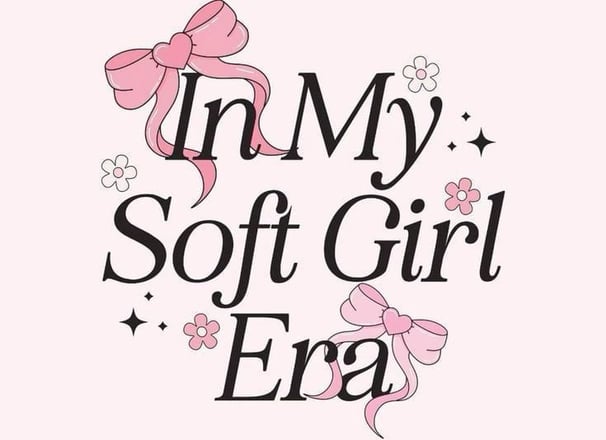How "Dark Feminine Energy" redefines modern feminism and empowerment
Explore how dark feminine energy is reshaping feminism and empowerment through psychology, cultural perspectives, and social media. Learn about its deep emotional and psychological impact and how platforms like Instagram and TikTok are popularizing this powerful movement
PSYCHOLOGY OF LOVE
Shivanshee Rathore
10 min read


Introduction: Dark feminine energy, a trend or lifestyle choice?
Unsurprisingly, the concept of female power has evolved and been dominant over the internet for a while now. The concept of these feminine powers has always been multifaceted. Still, the focus has shifted and remained on "dark feminine" or "dark femininity" - a term that represents a shift from the traditional definition of feminity. Dark feminine energy embraces traits such as sensuality, mystery, and shadow work, challenging the stereotypes of associating femininity with passive and submissive behaviors. This blog explores how dark feminine has helped in refining feminism in modern times and by combining psychological insights, I will outline how it can empower women in cultural contexts.
Image credit: Pinterest
What is dark feminine energy? Understanding the concept of "shadow"
Dark feminine energy originates from Carl Jung's theory of collective unconscious which introduced the concept of having a "shadow self", which consists of repressed thoughts, desires, and impulses (Jung, 1953). These thoughts, desires, or impulses can include traits such as sensuality, ambition, and anger (often these traits are considered too masculine to be displayed by women, and are therefore, discouraged by society and deemed as unruly for women to express openly. Nonetheless, Littman-Ovadia et al. (2021) found that integration of the shadow self can lead to improved relationships, enhanced creativity and increased emotional intelligence.
Often, unconsciously, the human psyche associates the word "dark" with bad-intentioned deeds (Meier et al., 2007). However, dark feminine energy is not about negativity or malice; instead, it focuses on reclaiming aspects of oneself that have been shunned or marginalized. Since excess of everything is harmful, dark femininity balances light feminine energy, which tends to focus on caregiving, softness, and nurturing traits. Contrastingly, dark feminine traits include strength, independence, and seduction.
How does Dark Feminine Energy link to empowerment?
Historically, women in every culture have been taught to repress qualities or traits that are too "intense" or "disruptive".However, modern feminism focuses on embracing these said traits which were shunned by breaking barriers and dark feminine energy plays a pivotal role in this shift. Not only does it empower women to embrace all their qualities but it also focuses on making women fall in love with these qualities they possess.
Psychological research shows that embracing one's shadow self leads to greater self-acceptance and emotional resilience (Niemiec et al., 2010). This psychological foundation emphasizes the transformative nature of dark feminine energy, which can help women overcome societal pressures, set firm boundaries, and reclaim their autonomy (Kumar & Tahmaseb-McConatha, 2023). Instead of wanting to seek dominance through aggression or control, dark feminine energy challenges the traditional patriarchal definition of what is or is not to be a woman while also achieving a sense of inner fulfillment and navigating male-dominated spaces easily.






Image credit: Pinterest
Image credit: Pinterest
Image credit: Pinterest
The Aesthetic of Dark Feminine Energy
The aesthetic component is not just a superficial "face card". Research suggests that both clothing and appearance significantly influence self-perception and confidence (Adam & Galinsky, 2012). For many women, adopting this aesthetic is about reclaiming their identity and embracing the traits that they have suppressed in the past.
The dark feminine aesthetic often incorporates colors with a darker undertone such as black, deep burgundy, and muted gold shades - all are associated with mystery, strength, and allure. Psychologically, different colors evoke different feelings of depth and introspection (ref). For instance:
Black: Black color is often associated with power and sophistication (Amsteus et al., 2015)—moreover, Robert et al. (2015) found that wearing black is often interlinked with evoking feelings of elegance and power. This is why individuals attending a high-class or fancy vent tend to gravitate towards black attire. Even though little research and literature associating the usage of the color black with dark feminine energy, we can conclude that because of the pre-existing literature on the perception of black color (often associated with traits such as sophistication, elegance, and power), the dark feminine aesthetic heavily relies on utilizing these pre-existing and established positive associations with the color black to convey their message to the public.
However, there are some negative associations with black color in the context of culture and language. For instance, Sanford (2014) found that this somber color evokes anger, fear, and sadness. Conjointly, one of the most common examples of black being associated with negative perception can be seen through our language: "Blackmail", "Black Friday", "Black magic", "Black Plague" and so on. In essence, black is associated with everything evil. Vrij & Akehurst (1997) found that black is also a stereotypical color for criminals and villains. Why do you think Dracula and the horror components of the Addamn family are almost always in black?
Burgundy: Burgundy is often associated with warmth, richness, and sophistication (Edwards-Wright, 2011). The source states that burgundy can symbolize serious, thoughtful personalities and convey a sense of ambition and leadership. Adobe (n.d) expresses that the color burgundy held a lot of significance even in catholicism in the previous centuries - and is also associated with traits such as nurturing, warmth, and compassion. Even though there is little evidence associating the use of color of burgundy with dark feminine energy, we can assume that the movement of dark femininity has adopted certain colours due to their pre-established and associations with positive attributes. In the case of burgundy, these attritubtes are ambitiousness, comparison and luxury which are in line with what dark feminine aesthetic wants to convey.
Apart from colors, it has been noticed online that the dark feminine aesthetic is also associated with textures and symbols that emulate the sense of power and vulnerability - such as lace, corsets, ribbons, and even gothic-inspired elements. These visual cues are in coherence with the emotional and psychological depth of dark feminine energy, creating an aligned narrative and branding message of empowerment and embracing one's feminity.


Image credit: Pinterest
Psychological Insights: Why This Shift Matters
Rooted in theories of personality integration and emotional empowerment, dark feminine energy can have profound psychological significance as this concept aligns closely with Carl Jung's process of individuation (the process where individuals combine both conscious and unconscious parts of the self to achieve wholeness; Jung, 1953). Some of the contributions of dark femininity have been outlined below:
The Role of Shadow Work in Empowerment
Shadow work, a process of confronting suppressed emotions, traits, and fears, is the central pith of embracing dark feminine energy. Particularly, women have been conditioned to suppress emotions such as anger, ambition, or even jealousy due to societal pressure and the societal expectations of always being presented as hurting and compliant (Brown, 2022). Castro and Zautra (2016) claim that by integrating hidden aspects of oneself into their identity, individuals can confront these emotions and transform them into sources of strength and empowerment.
Research in positive psychology supports this notion that confronting and integrating our shadow self can lead to greater emotional resilience. For instance, Neimiec et al. (2012) found that individuals who use mindfulness-based practices to confront their shadow traits report a high level of self-acceptance and psychological well-being. This aligns with the messaging behind the dark feminine principle of embracing complex emotions and finding strength in emotional authenticity.
Emotional Depth and Resilience
One of the key psychological benefits of ark feminine energy is it emphasizes emotional depth. Unlike societal norms that prioritize emotional suppression, dark feminine energy encourages women to express their emotions freely. Research by Gross and John (2003) demonstrated that emotional suppression leads to healthier relationships and mental health while emotional suppression leads to increased stress and decreased interpersonal satisfaction. In terms of modern feminism, dark feminine energy redefines the relationship between emotion, power,r and oneself. Women embracing their emotional depth display feeling more confidence in their ability to handle conflict, implant firm boundaries and assert their needs (Linehan, 2015).
The Psychology of Sensuality and Embodiment
Dark feminine energy underscores the importance of sensuality - not as a tool of objectification but as a medium of self-connection. Somatic psychology research has highlighted the importance of body awareness in building self-esteem and reducing anxiety (Fogel, 2013). By reclaiming their bodies as a source of power, women can counteract societal messages that reduce feminity to objectification and external appearances only.
Additionally, research on self-objectification theory (Fredrickson & Roberts, 1997) has revealed that when societal pressures get internalized it often makes women view themselves as objects rather than agents. With its focus on autonomy and sensuality, dark feminine energy helps disrupt this narrative and instead encourages women to view their bodies as a medium for expression, pleasure, and strength.
Authenticity and Self-Compassion
Apart from the concept of empowerment and sensuality, the dark feminine energy also focuses on self-compassion. Neff (2003) defined self-compassion as an act of treating oneself with kindness during moments of pain or failure. To support this claim, Barnard and Curry (2011) found that self-compassionate individuals experience low levels of depression and anxiety, making this an essential tool for modern empowerment. Moreover, women who practice self-compassion are more likely to view their "flaws" as opportunities for growth and not as weaknesses. This mind-shift allows one to reclaim the power over societal narratives, without having to fit the mould of perfection - a perspective supported by the foundation of dark feminine energy.


Image credit: Pinterest
Concluding Advice: Embrace your shadow self
Dark feminine energy is more than just a cultural trend - it's a psychological and emotional framework that empowers women to embrace their complexities. By involving and embracing their shadow self, reclaiming their sensuality, and redefining power dynamics, women are creating a new framework for modern feminism. Although this movement helps in rejecting traditional roles, it is also about creating a future where femininity is celebrated and respected in all its forms.
Future research direction
The psychological impact of embracing dark feminine traits: This research could focus on investigating the psychological effects of integrating dark feminine energy on mental health, self-esteem, and emotional resilience. Especially, one could examine whether practices such as shadow work and embracing suppressed emotions enhance individuals' ability to regulate emotions and improve one's well-being.
Potential Research question: How does the adoption of dark feminine traits influence mental health outcomes like anxiety and depression?/ What role does emotional expression, a hallmark of dark feminine energy, play in interpersonal relationships?/ Does shadow work facilitate self-esteem and emotional resilience in women?
Potential outcomes: This research could reveal whether integrating dark feminine traits leads to significant improvement in self-esteem, mental health, and resilience. It might also display how emotional expression and shadow work impact interpersonal relationships and intersectionality.
Social media's role in promoting dark feminine energy: This research could focus on analyzing the role of social media platforms in shaping and disseminating dark feminine energy by examining how online communities influence perceptions, adoption, and commodification of this concept.
Potential research questions: How do social media platforms popularise dark feminine energy as a movement? / What impact does exposure to dark feminine-related content have on self-perception and empowerment?/ Is the concept of dark femininity being commercialized or distorted through social media trends?
Potential outcomes: This research could unravel if social media acts as both an empowering tool or a potential source of distortion for dark feminine energy. It might display the role of influencers and algorithms in shaping narratives around modern feminity.
FAQ Section
Can men embody dark feminine energy?
feminity Yes, Dark feminine energy transcends gender and can be embraced by anyone. For men, it may involve embracing qualities like emotional depth, intuition, and nurturing.
Is dark feminine energy tied to spiritualism?
While not inherently spiritual, dark feminine energy can overlap with spiritual practices such as meditation, shadow work, and energy healing. These practices help individuals to connect with their inner selves.
How is dark feminine energy different from toxic behavior?
Dark femininity is about self-awareness and empowerment and does not impart the message of manipulation or harm. Toxic behavior usually stems from unresolved issues and a lack of empathy, while dark feminine energy focuses on celebrating our suppressed emotions to achieve emotional balance.
Is embracing dark feminine energy compatible with traditional feminism?
Yes! Like traditional feminism seeks equality and dismantling restrictive gender roles, dark feminine energy encourages women to embrace all aspects of themselves, including traits that are traditionally deemed as "unacceptable" by society.
References
Adam, H., & Galinsky, A. D. (2012). Enclothed cognition. Journal of experimental social psychology, 48(4), 918-925.
Adobe. (n.d.). Burgundy color meaning. Adobe Express. Retrieved January 23, 2025, from https://www.adobe.com/express/colors/burgundy
Amsteus, M., Al-Shaaban, S., Wallin, E., & Sjöqvist, S. (2015). Colors in marketing: A study of color associations and context (in) dependence. International Journal of Business and Social Science, 6(3).
Barnard, L. K., & Curry, J. F. (2011). Self-compassion: Conceptualizations, correlates, & interventions. Review of general psychology, 15(4), 289-303.
Brown, B. (2022). The gifts of imperfection: Let go of who you think you're supposed to be and embrace who you are. Simon and Schuster.
Castro, S. A., & Zautra, A. J. (2016). Humanization of social relations: Nourishing health and resilience through greater humanity. Journal of Theoretical and Philosophical Psychology, 36(2), 64.
Edwards-Wright, T. (2011). Your favorite color has a meaning. Lulu. com.
Fogel, A. (2013). Body sense: The science and practice of embodied self-awareness. WW Norton.
Fredrickson, B. L., & Roberts, T. A. (1997). Objectification theory: Toward understanding women's lived experiences and mental health risks. Psychology of women quarterly, 21(2), 173-206.
Gross, J. J., & John, O. P. (2003). Individual differences in two emotion regulation processes: implications for affect, relationships, and well-being. Journal of personality and social psychology, 85(2), 348.
Kumar, V. K., & Tahmaseb-McConatha, J. (2023). Life satisfaction and psychological and physical well-being. MDPI.
Littman-Ovadia, H., Dubreuil, P., Meyers, M. C., & Freidlin, P. (2021). VIA character strengths: Theory, research and practice. Frontiers in psychology, 12, 653941.
Meier, B. P., Robinson, M. D., Crawford, L. E., & Ahlvers, W. J. (2007). When" light" and" dark" thoughts become light and dark responses: affect biases brightness judgments. Emotion, 7(2), 366.
Neff, K. D. (2003). The development and validation of a scale to measure self-compassion. Self and identity, 2(3), 223-250.
Niemiec, R., Rashid, T., & Spinella, M. (2012). Strong mindfulness: Integrating mindfulness and character strengths. Journal of Mental Health Counseling, 34(3), 240-253.
Roberts, S. C., Owen, R. C., & Havlicek, J. (2010). Distinguishing between perceiver and wearer effects in clothing color-associated attributions. Evolutionary Psychology, 8(3), 350-364.
Sandford, J. L. (2014). Turn a colour with emotion: a linguistic construction of colour in English. JAIC-Journal of the International Colour Association, 13.
Vrij, A., & Akehurst, L. (1997). The existence of a black clothing stereotype: The impact of a victim'black clothing on impression formation. Psychology, Crime and Law, 3(3), 227-237.
